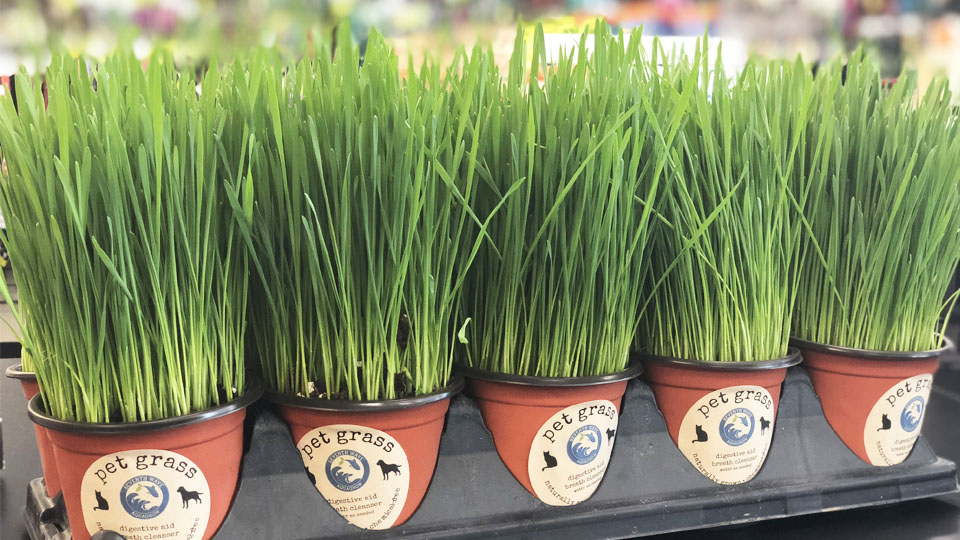Does your dog like to forage and munch on the grass out in yard? Or do you have a cat that likes to graze on your houseplants? If so, “Pet Grass” might be a healthful addition their diet.
Pet Grass is essentially wheatgrass, though it can sometimes include other healthful grasses. It’s long been known that wheatgrass contains a wealth of nutrients, which is why you’ll find wheatgrass supplements in health food stores, as well as people adding wheatgrass to smoothies and drinking wheatgrass juice shots.
Wheatgrass is known to contain a wide range of amino acids, vitamins, chlorophyll, enzymes, and fiber. The potential health benefits to consuming wheatgrass include antioxidants, organ cleansing, breath freshening, digestion support, help with constipation, odor control, energy boosting, and antiseptic properties.
What Exactly is Wheatgrass?
Wheatgrass is gluten-free when harvested from a growing wheat plant without any seeds.
Wheatgrass is the fresh sprouted leaves of the wheat plant. When people hear wheat, they automatically think gluten. However, the actual grass itself does not contain gluten, which is only found in the seed kernels of the wheat plant, not in its grasses.
Beyond Celiac, Is Wheatgrass Gluten-Free?
Why Offer Wheatgrass to Your Dog or Cat
There are many reasons why your dog might eat grass out in the yard. Sometimes dogs will eat grass to help induce vomiting when they know there’s something inside that needs to come out. Sometimes they do it simply out of boredom. And often they will eat grass if there are nutrients or enzymes lacking in their diet, which can often be the result of exclusively eating processed food (kibble and canned) that lacks the enzymes found in fresh foods.
Now of course, there’s nothing inherently wrong with eating grass in and of itself. However, many yards are treated with chemical fertilizers, weed killer, and pesticides. If it’s been rainy and wet your yard could also have toxic mushrooms that are easy to miss with a quick glance.
Offering organic wheatgrass that’s grown inside is a great way to give your dog what they’re looking, and to allow for the exercising of their natural instincts safely. Many cats also enjoy munching on wheatgrass for some of nutrients, fiber, and because it’s a mentally and physically stimulating activity.
How to Feed Wheatgrass to Your Dog or Cat
If you want to engage their natural foraging instincts, you can leave the wheatgrass potted and place it next to where their water and food bowl goes. You may need to encourage them by pulling a blade of grass off and hand feeding it to them, considering they may have been corrected when trying to eat your houseplants in the past.
Allowing them to forage is my personal favorite because one of my pugs, Murphie, loves to forage on grass and clover out in the yard.
If they aren’t interested in munching on the grass straight from the pot you can can also clip a little off fresh, chop it up, and add it their food. A little will go a long way, so much won’t be needed.
To care for your wheatgrass, whether you grow it yourself or purchase it fully grown, all you need to is give it a a little bit of water everyday.

